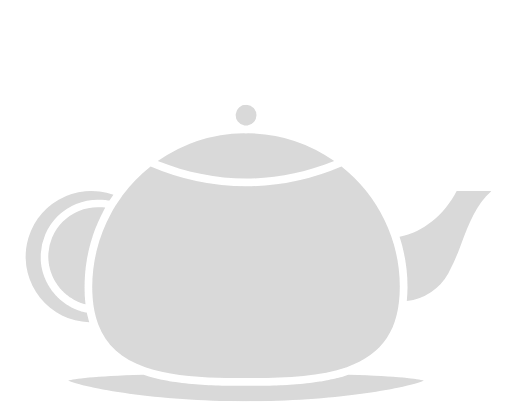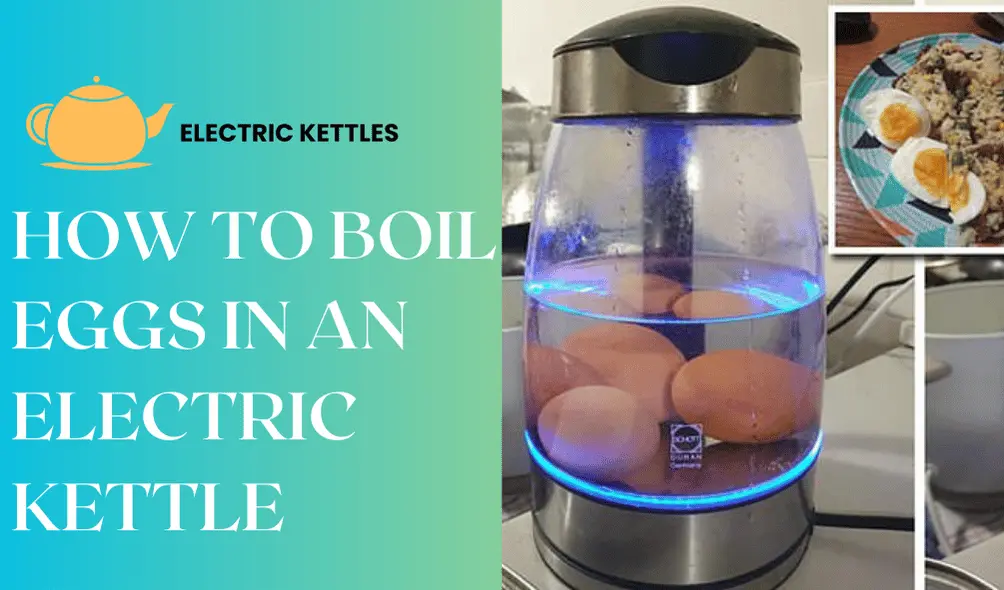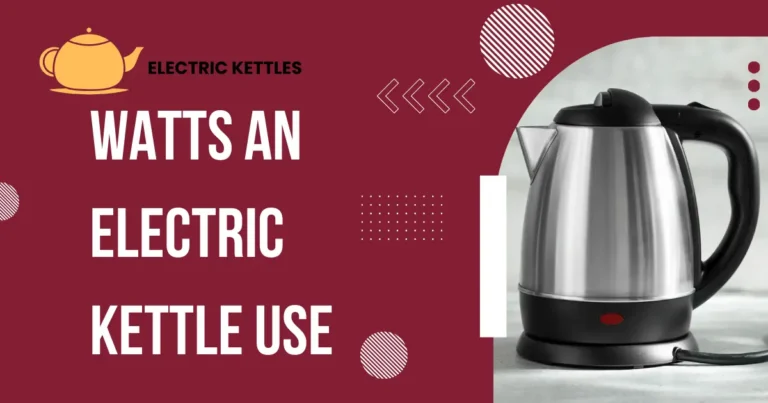How to Boil Eggs in an Electric Kettle
Boiling eggs in an electric kettle is a quick and easy method. It allows you to cook eggs without using a stove. Electric kettles are efficient and can save time. You just need to add water and place the eggs inside. The kettle heats the water, boiling the eggs to your desired doneness.
This method is suitable for making soft-boiled or hard-boiled eggs. Timing is important to achieve the right texture. Soft-boiled eggs take less time, while hard-boiled eggs require a bit more. After boiling, it’s best to cool the eggs in cold water. This helps stop the cooking process and makes peeling easier.
Table of Contents
Preparing the Eggs
Before boiling eggs in an electric kettle, start by selecting fresh eggs. Fresh eggs are easier to peel and taste better. Look for eggs that are clean and free from cracks. If you find any dirty eggs, gently wash them under cool water and dry them with a clean towel.
Next, prepare the eggs properly for boiling. You can pierce the larger end of each egg with a pin. This small hole helps prevent the eggs from cracking during the boiling process. Be careful not to apply too much pressure when piercing.
Once prepared, arrange the eggs in the kettle. Ensure they are not overcrowded, as this can lead to uneven cooking. Placing the eggs in a single layer will help them cook evenly and achieve the desired texture. Following these steps will ensure your eggs are ready for boiling and turn out perfectly cooked.
Boiling Eggs in an Electric Kettle
Boiling eggs in an electric kettle is a straightforward process. First, fill the kettle with water, making sure to cover the eggs completely. The amount of water you need depends on how many eggs you are boiling. Generally, 1 to 2 inches of water above the eggs is sufficient.
Next, place the prepared eggs in the kettle. You can use a steamer basket or directly place the eggs in the water. Turn on the kettle and wait for it to come to a boil. Most electric kettles will automatically shut off once the water reaches a boil.
After the kettle shuts off, let the eggs sit in the hot water. The resting time varies depending on whether you want soft-boiled or hard-boiled eggs. For soft-boiled eggs, let them sit for about 5 to 7 minutes. For hard-boiled eggs, let them sit for 10 to 12 minutes.
Timing for Perfectly Boiled Eggs
Timing is crucial when boiling eggs in an electric kettle. The duration affects the texture and doneness of the eggs. For soft-boiled eggs with a slightly runny yolk, let the eggs sit in hot water for about 5 to 7 minutes. This short time allows the whites to set while keeping the yolks creamy.
If you prefer hard-boiled eggs with fully cooked yolks, extend the resting time to 10 to 12 minutes. This ensures the yolks are firm and cooked through. Adjust the timing slightly based on your kettle and personal preferences, as different kettles may heat water differently.
Using a timer or alarm can help you keep track of the cooking time. Once the desired time is reached, promptly remove the eggs and cool them in cold water. This stops the cooking process and helps achieve the perfect boil every time.
Cooling and Peeling the Eggs
After boiling the eggs, it’s essential to cool them properly. Immediately transfer the eggs to a bowl of cold water or place them under cold running water. This cooling method helps stop the cooking process, preventing overcooking. Let the eggs sit in the cold water for about 5 to 10 minutes to cool down completely.
Once the eggs are cool, it’s time to peel them. Gently tap each egg on a hard surface to crack the shell. Start peeling from the larger end, as there is usually an air pocket that makes it easier to begin. You can also roll the egg lightly on the surface to loosen the shell before peeling.
If you find the shells difficult to remove, try peeling them under running water. The water helps separate the shell from the egg, making the process smoother. Following these steps will ensure your boiled eggs are easy to peel and ready to enjoy.
You can also read what can you cook in an Electric kettle.
Serving Suggestions
Boiled eggs are versatile and can be enjoyed in many delicious ways. One simple option is to serve them sliced on toast. You can add a sprinkle of salt, pepper, or your favorite seasoning for extra flavor. They also make a great addition to salads, providing a protein boost and enhancing the dish’s texture.
Another popular serving suggestion is to prepare deviled eggs. To make deviled eggs, slice the boiled eggs in half and remove the yolks. Mash the yolks with mayonnaise, mustard, and spices, then spoon or pipe the mixture back into the egg whites. This creates a tasty appetizer that is perfect for parties or gatherings.
Common Mistakes to Avoid
1. Insufficient Water Level
One frequent mistake is not using enough water in the kettle. If the water level is too low, the eggs may not cook evenly or might crack during the boiling process. Always ensure the water covers the eggs adequately for optimal cooking.
2. Ignoring Kettle Performance
Another mistake is failing to adjust the timing based on your kettle’s performance. Different kettles heat water at varying rates, so it’s important to test and adjust the boiling times accordingly. Relying solely on a timer without checking the doneness can lead to overcooked or undercooked eggs.
3. Peeling Too Soon
Peeling eggs too soon after boiling is also a common error. If you peel the eggs immediately, they may be harder to remove. Always cool the eggs in cold water first to make the peeling process easier.
4. Overcrowding the Kettle
Placing too many eggs in the kettle can lead to uneven cooking. Make sure to arrange the eggs in a single layer and avoid overcrowding to ensure they cook properly.
5. Not Using Fresh Eggs
Lastly, using stale or old eggs can result in a poor texture and flavor. Always select fresh eggs for the best results. Fresh eggs are easier to peel and taste better, enhancing your overall experience.
FAQs
Q1. Can I boil eggs in an electric kettle?
Not all electric kettles are designed for boiling eggs. Check the manufacturer’s instructions to ensure your kettle is suitable for this purpose.
Q2. How many eggs can I boil at once?
Most electric kettles can hold 4 to 6 eggs at a time. However, check your kettle’s capacity to avoid overcrowding.
Q3. Do I need to add salt or vinegar to the water?
Adding salt or vinegar is not necessary, but it can help prevent cracking and make peeling easier. It’s a personal choice.
Q4. Can I use frozen eggs in the kettle?
It’s not recommended to use frozen eggs, as they may crack when boiling. Always use fresh eggs for the best results.
Q5. How should I store leftover boiled eggs?
Store leftover boiled eggs in the refrigerator. Keep them in their shells for up to one week for the best freshness.
Conclusion
Boiling eggs in an electric kettle is an easy and efficient method. It saves time and requires minimal effort. By following the steps outlined in this article, you can achieve perfectly boiled eggs every time. Remember to pay attention to timing and water levels for the best results.
Cooling the eggs in cold water after boiling makes peeling easier. You can enjoy boiled eggs in many ways, from snacks to meal additions. Avoid common mistakes, like overcrowding and using old eggs, to enhance your cooking experience.







